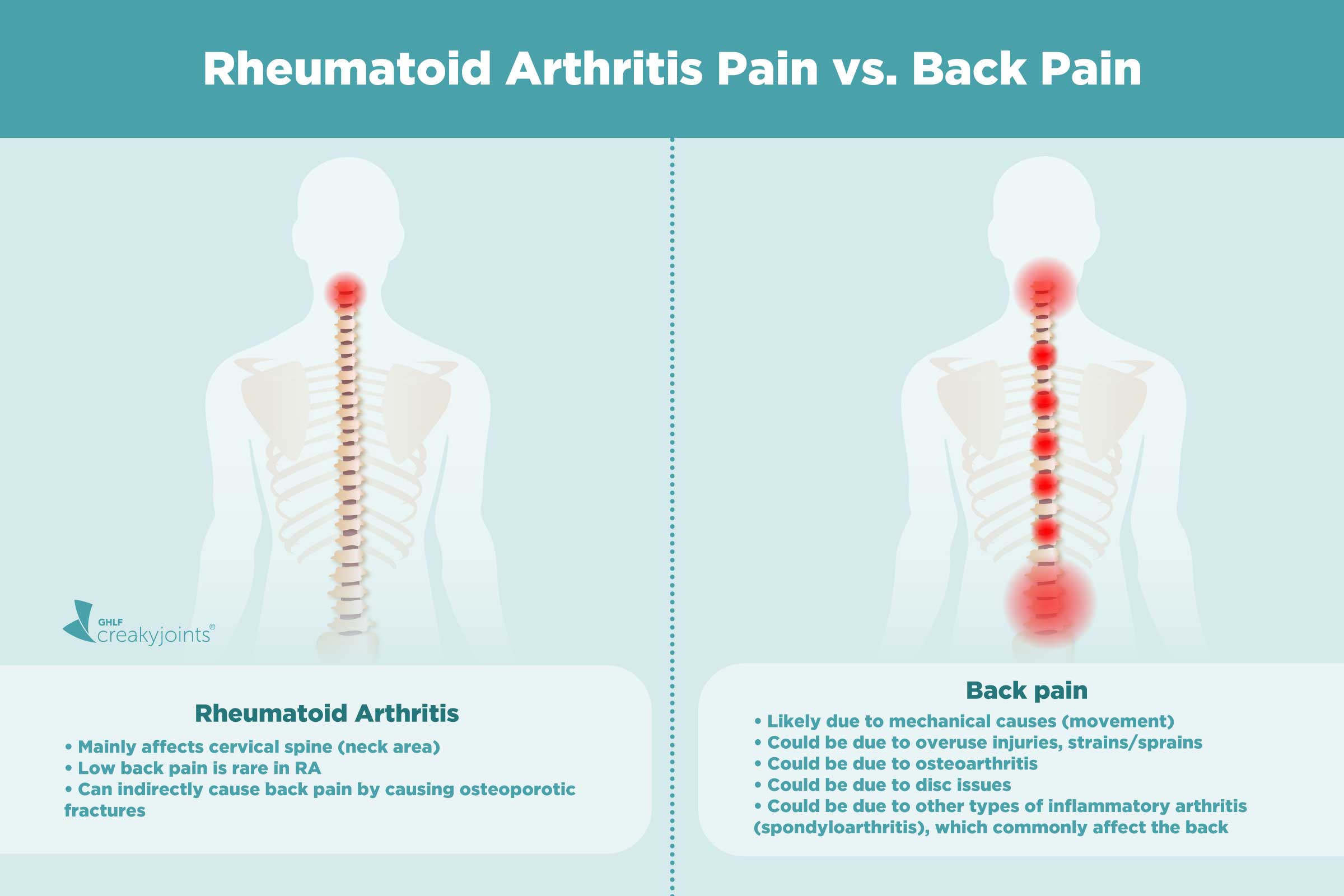What Helps Back Arthritis: A Comprehensive Guide to Spinal Arthritis
What are the causes and types of spinal arthritis? How can it be treated? Get the facts and learn strategies to manage arthritis in the back or neck.
Spinal Arthritis: Understanding the Causes and Symptoms
Spinal arthritis, also known as arthritis in the back or neck, is a common condition that affects the joints and connective tissues of the spine. It is typically caused by inflammation, wear and tear, or autoimmune disorders. The most common type of spinal arthritis is osteoarthritis, which is often a result of age-related degeneration. Other forms, such as rheumatoid arthritis and spondyloarthritis, can also affect the spine and may have different underlying causes.
Types of Spinal Arthritis
There are several different types of spinal arthritis, each with its own characteristics and causes:
Osteoarthritis of the Spine
Osteoarthritis is the most prevalent form of spinal arthritis, typically affecting the lower back and neck. It is a degenerative condition that develops over time as the cartilage between the joints wears down, leading to inflammation and pain. Past back injuries can also contribute to the development of osteoarthritis in the spine.

Rheumatoid Arthritis of the Spine
Rheumatoid arthritis is an autoimmune disorder that can affect the spine, particularly the cervical region (neck). Unlike osteoarthritis, rheumatoid arthritis is not caused by wear and tear, but rather by the immune system attacking the joint lining (synovium). This can lead to back pain even when the joints are not in use.
Spondyloarthritis
Spondyloarthritis is a group of inflammatory conditions that can affect the spine and the places where ligaments and tendons attach to the bones (entheses). This includes conditions like ankylosing spondylitis, psoriatic arthritis, reactive arthritis, and enteropathic arthritis. These disorders can cause inflammation in the vertebrae and sacroiliac joints, and in severe cases, may lead to the fusion of multiple vertebrae.
Symptoms of Spinal Arthritis
The most common symptoms of spinal arthritis include:
- Pain and stiffness in the back or neck
- Difficulty with movement and range of motion
- Swelling and tenderness in the affected joints
- Radiating pain, numbness, or tingling in the limbs (if nerves are affected)
Causes and Risk Factors of Spinal Arthritis
The exact causes of spinal arthritis are not fully understood, but several factors can contribute to its development:
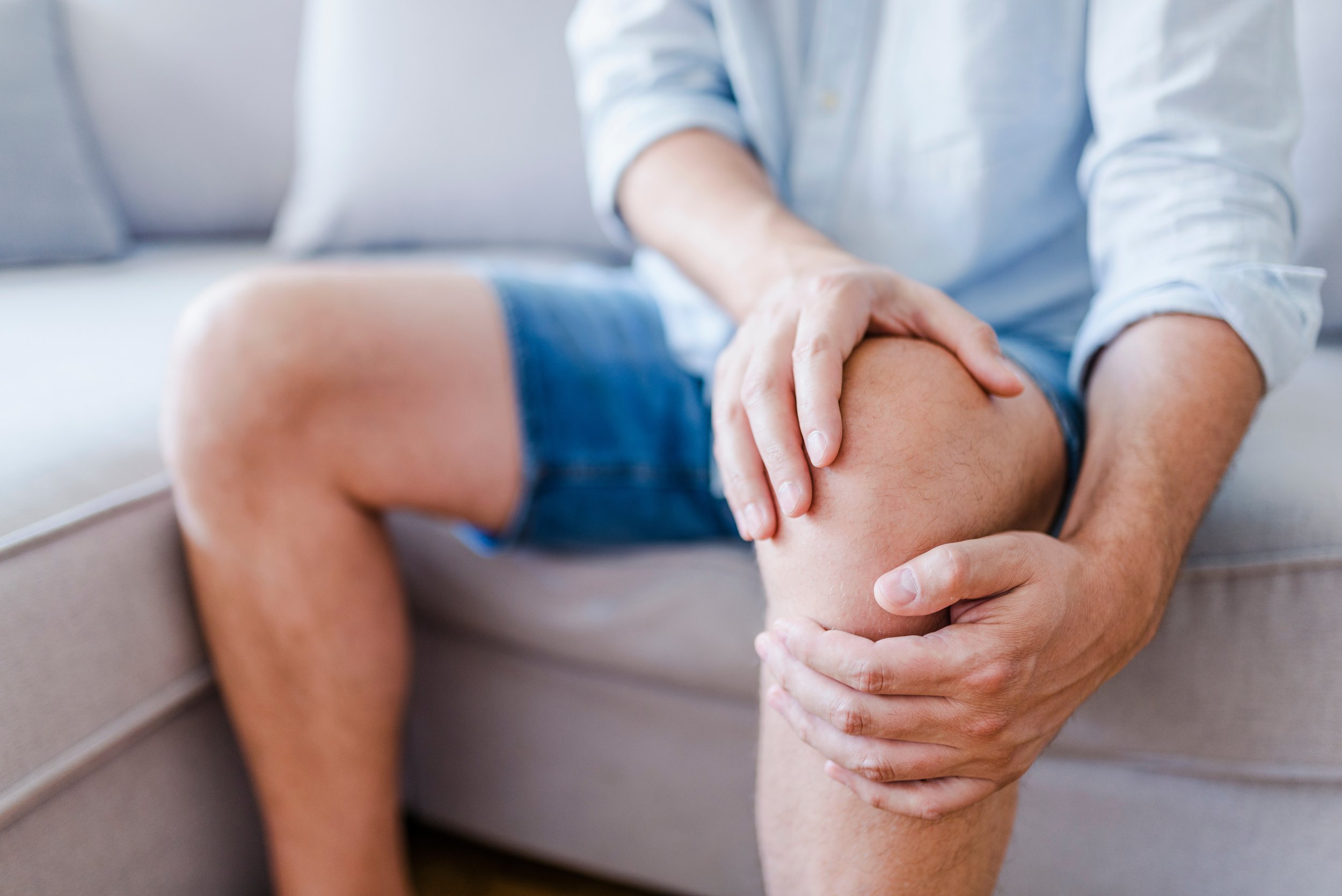
- Age: Spinal arthritis is more common in older adults due to the wear and tear on the joints over time.
- Excess weight: Being overweight or obese can increase the stress on the spine and contribute to the development of arthritis.
- Underlying health conditions: Certain conditions, such as diabetes, gout, psoriasis, and Lyme disease, may increase the risk of developing spinal arthritis.
- Genetics: There appears to be a genetic component to some forms of spinal arthritis, such as ankylosing spondylitis.
- Past injuries: Previous back or neck injuries can lead to the development of osteoarthritis in the affected areas.
Diagnosing Spinal Arthritis
Diagnosing spinal arthritis typically involves a combination of physical examination, medical history, and imaging tests, such as X-rays, MRI, or CT scans. The specific tests used will depend on the suspected type of arthritis and the severity of the symptoms.
Treatment Options for Spinal Arthritis
The treatment for spinal arthritis often involves a combination of therapies, including:
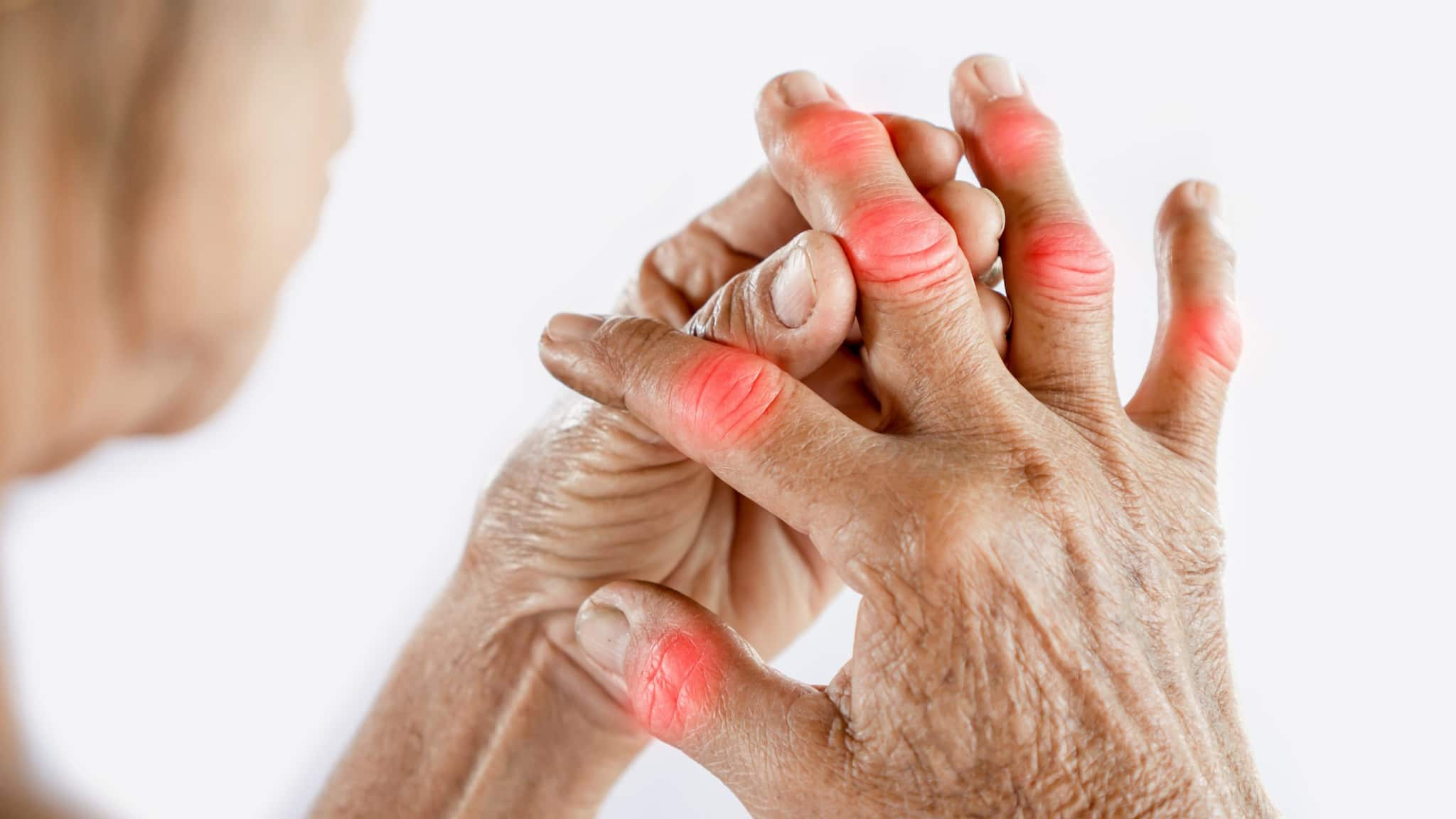
- Pain medication, such as over-the-counter or prescription anti-inflammatory drugs
- Corticosteroid injections to reduce inflammation and pain
- Physical therapy to improve range of motion and strengthen the muscles supporting the spine
- Weight management to reduce stress on the spine
- In severe cases, surgery may be recommended to address structural issues or fuse vertebrae together
Managing Spinal Arthritis through Lifestyle Changes
In addition to medical treatment, there are several lifestyle changes that can help manage the symptoms of spinal arthritis:
- Maintaining a healthy weight to reduce stress on the spine
- Engaging in low-impact exercises, such as swimming or cycling, to improve flexibility and strength
- Using heat or cold therapy to alleviate pain and inflammation
- Practicing good posture and proper body mechanics to minimize strain on the back and neck
- Exploring complementary therapies, such as acupuncture or massage, to help manage pain and stiffness
By understanding the different types of spinal arthritis, their causes, and the available treatment options, individuals can work with their healthcare providers to develop a comprehensive plan to manage their condition and maintain their quality of life.

Spinal Arthritis (Arthritis in the Back or Neck)
Spinal arthritis is inflammation of the facet joints in the spine or sacroiliac joints between the spine and the pelvis. It may be related to wear and tear, autoimmune disorders, infection and other conditions. Sometimes, the inflammation may also affect the sites where ligaments and tendons attach to the bones of the spine. Regardless of the exact location, arthritis in the back or neck can be painful and often becomes chronic.
Spinal Arthritis: What You Need to Know
Osteoarthritis is the most common type of arthritis to affect the spine.
Arthritis can occur anywhere along the spine, but is more frequent in the lower back and neck.
Pain and stiffness are the most common symptoms of spinal arthritis.
Causes of spinal arthritis are still largely unknown except for osteoarthritis, which is typically a result of wear and tear.
Spinal arthritis treatment may include pain medications, steroid injections, physical therapy and surgery in severe cases.

Spinal Arthritis Causes and Risk Factors
The causes of arthritis in the back or neck vary depending on the type of arthritis you have. Besides normal wear and tear and autoimmune triggers, in many cases the exact cause remains unknown. Genetic components have been identified in connection with some forms of spinal arthritis, meaning that it may be hereditary.
Other spinal arthritis risk factors include:
Age
Excess weight/obesity
Presence of certain conditions such as diabetes, gout, psoriasis, tuberculosis, irritable bowel syndrome and Lyme disease
Types of Spinal Arthritis
There are more than 100 different types of arthritis, and most of them may affect the back or neck. Although all arthritis leads to inflammation, arthritis is categorized as inflammatory and noninflammatory (degenerative) based on its origin.
Osteoarthritis of the Spine
Osteoarthritis (noninflammatory or degenerative arthritis) is the most common form of spinal arthritis. It usually affects the lower back and develops through wear and tear. As the cartilage between the joints slowly breaks down, it leads to inflammation and pain. Because the pain is from mechanical damage, it is typically more noticeable when you bend or twist your back. Past back injuries may also contribute to the development of degenerative arthritis of the spine.
It usually affects the lower back and develops through wear and tear. As the cartilage between the joints slowly breaks down, it leads to inflammation and pain. Because the pain is from mechanical damage, it is typically more noticeable when you bend or twist your back. Past back injuries may also contribute to the development of degenerative arthritis of the spine.
Osteoarthritis of the spine usually affects the facet joints between the vertebrae. It is also known as facet joint arthritis, facet joint syndrome and facet disease. In some cases, degeneration of the spinal discs (degenerative disc disease) may contribute to facet joint arthritis. As discs between the vertebrae become thinner, more pressure is transferred to the facet joints. This leads to more friction and more damage to the cartilage.
When these degenerative changes occur in the neck, this condition is called cervical spondylosis. Arthritis in the neck doesn’t always cause pain, and many people have no noticeable symptoms.
Rheumatoid Arthritis of the Spine
Rheumatoid arthritis (RA) is an autoimmune disorder, meaning that the immune system turns on itself. It attacks synovium — the lining of the joints. Although rheumatoid arthritis is more common in other joints, it can also affect the spine, specifically the cervical region (neck). Rheumatoid arthritis of the spine is not caused by wear and tear, so it’s considered an inflammatory arthritis. It may cause back pain (and pain in other joints) even when these joints are not in use. It tends to affect women more than men.
Spondyloarthritis
Spondyloarthritis is a group of inflammatory diseases that affect both the joints and the locations where the ligaments and tendons attach to the bones (entheses). Spondyloarthritis, although inflammatory by origin, is not the same as rheumatoid arthritis.
There are several forms of spondyloarthritis — some are more common in the spine than others:
Ankylosing spondylitis is a type of spinal arthritis that may cause inflammation of the vertebrae and the sacroiliac joints at the base of the spine.
 In severe cases, several vertebrae may fuse together and cause a hunch in the back.
In severe cases, several vertebrae may fuse together and cause a hunch in the back.Psoriatic arthritis is a condition associated with psoriasis — an autoimmune disorder better known for the itchy, scaly rash. People typically develop psoriasis before arthritis, but sometimes it is reversed. Although more common in smaller joints, it may also affect the spine.
Reactive arthritis is joint inflammation triggered by infection somewhere else in the body — often in the bowel or the genitals. Reactive arthritis in the spine usually occurs in the lower back and tends to go away on its own.
Enteropathic arthritis is a form of arthritis linked to inflammatory bowel disease (IBD). Not all people with IBD develop arthritis, and of those who do, not all get it in the spine. Enteropathic arthritis flare-ups tend to sync with IBD flare-ups, but the timing and intensity may vary from person to person.
Other forms of spondyloarthritis include undifferentiated spondyloarthritis (when symptoms don’t match any of the known types) and juvenile spondyloarthritis (when symptoms begin in childhood).

According to a different classification, if a particular type of arthritis involves the spine and/or sacroiliac joints, it is called axial spondyloarthritis. If other joints and tendons are involved, this is called peripheral spondyloarthritis. Many people experience both types at different points in the progress of their spondyloarthritis.
[[degenerative_spine_conditions]]
What are the symptoms of spinal arthritis?
Symptoms of spinal arthritis may differ from person to person. In general, they may include:
Back and neck pain, especially in the lower back
Stiffness and loss of flexibility in the spine, such as being unable to straighten your back or turn your neck
Swelling and tenderness over the affected vertebrae
Feeling of grinding when moving the spine
Pain, swelling and stiffness in other areas of the body (especially in inflammatory arthritis)
Whole-body weakness and fatigue (more common in inflammatory arthritis)
Pain and numbness in your arms or legs if the nerves are affected
Headaches (in case of arthritis in the neck)
Although back pain is a common symptom, not all people have it, even those with advanced spinal arthritis. On the other hand, some may experience pain even before arthritis can be seen on an X-ray.
On the other hand, some may experience pain even before arthritis can be seen on an X-ray.
In certain types of spondyloarthritis, eye inflammation (iritis or uveitis) may occur, causing pain, watery eyes and blurred vision.
Spinal Arthritis May Contribute to Other Issues in the Spine
Bone spurs that formed on the facet joints are pressing on the nerve roots exiting the spine.
Spinal arthritis may cause bone spurs — overgrowths on the edges of the bones. In the spine, bone spurs particularly affect facet joints, making them grow larger. This condition is called facet joint hypertrophy. Although bone spurs on their own are not harmful, they may narrow the passages for the spinal cord and the nerves exiting the spine. This may lead to two painful conditions:
Spinal stenosis – compression of the spinal cord inside the spinal canal
Radiculopathy – pinching of the peripheral nerves as they exit the spine (sciatica is one type of radiculopathy)
Ankylosing spondylitis (the slow calcification of the ligaments between the vertebrae) may also cause additional problems such as:
How is spinal arthritis diagnosed?
Your doctor may use some or all of the following diagnostic methods to confirm spinal arthritis:
Medical history and physical exam
Blood tests for genetic markers and/or RA antibodies
X-rays of the spine to locate the arthritic joint
MRI, CT scan, myelography, bone scan and/or ultrasound to zero in on the damage, detect nerve and spinal cord involvement or rule out other causes
Joint aspiration: testing of the synovial fluid inside a joint
To pinpoint the painful joint, your doctor may numb it with an injection and check whether the pain goes away.
How is spinal arthritis treated?
The treatment for spinal arthritis depends on many factors. They may include your age, level of pain, type and severity of arthritis and personal health goals. Because the joint damage caused by arthritis is irreversible, the treatment usually focuses on managing pain and preventing further damage.
Nonsurgical treatments for spinal arthritis may include:
Nonsteroidal anti-inflammatory drugs (NSAIDs) and corticosteroids (pills or injections) to reduce pain and swelling
Other medications targeting specific symptoms or triggers of inflammatory arthritis
Physical therapy to improve back muscle strength and range of motion in the spine
Lifestyle changes to reduce inflammation or stress on your spine: losing weight, quitting smoking, changing your posture, etc.
Surgery for Spinal Arthritis
Surgery may be recommended for spinal arthritis if other treatments don’t sufficiently relieve pain.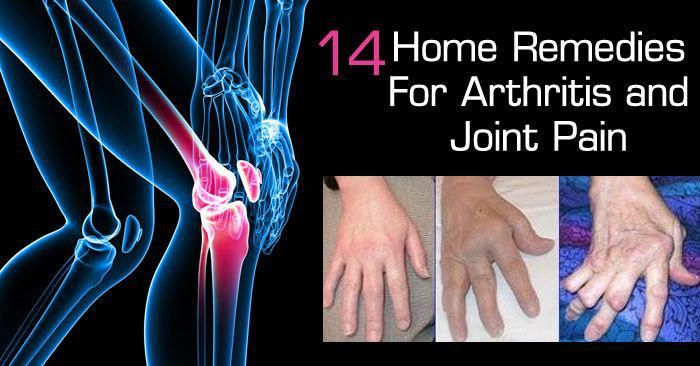 The goals of the surgery may include:
The goals of the surgery may include:
Decompressing the spinal cord and freeing up the nerve roots from bone spurs and other tissues that may be pressing on them
Stabilizing the spine by fusing several segments together in a procedure called spinal fusion
These surgeries can be performed as open procedures or with a minimally invasive approach. There are pros and cons to each method. The surgeon will review and discuss the options before the operation.
6 exercises for arthritis in the lower back to relieve pain
6 exercises for arthritis in the lower back to relieve pain
- Health Conditions
- Health Conditions
- Alzheimer’s & Dementia
- Anxiety
- Asthma & Allergies
- Atopic Dermatitis
- Breast Cancer
- Cancer
- Cardiovascular Health
- COVID-19
- Diabetes
- Environment & Sustainability
- Exercise & Fitness
- Eye Health
- Headache & Migraine
- Health Equity
- HIV & AIDS
- Human Biology
- Leukemia
- LGBTQIA+
- Men’s Health
- Mental Health
- Multiple Sclerosis (MS)
- Nutrition
- Parkinson’s Disease
- Psoriasis
- Psoriatic Arthritis
- Sexual Health
- Ulcerative Colitis
- Women’s Health
- Health Conditions
- Health Products
- Health Products
- Nutrition & Fitness
- Vitamins & Supplements
- CBD
- Sleep
- Mental Health
- At-Home Testing
- Men’s Health
- Women’s Health
- Health Products
- Discover
- News
- Latest News
- Original Series
- Medical Myths
- Honest Nutrition
- Through My Eyes
- New Normal Health
- Podcasts
- Can diet and exercise reverse prediabetes?
- Investigating the power of music for dementia
- How diet may help with endometriosis
- Is the ketogenic diet right for autoimmune conditions?
- Can diet help improve depression symptoms?
- Research highlights of 2022
- News
- Tools
- General Health
- Drugs A-Z
- Health Hubs
- Health Tools
- BMI Calculators and Charts
- Blood Pressure Chart: Ranges and Guide
- Breast Cancer: Self-Examination Guide
- Sleep Calculator
- Quizzes
- RA Myths vs Facts
- Type 2 Diabetes: Managing Blood Sugar
- Ankylosing Spondylitis Pain: Fact or Fiction
- General Health
- Connect
- About Medical News Today
- Who We Are
- Our Editorial Process
- Content Integrity
- Conscious Language
- Newsletters
- Sign Up
- Follow Us
- About Medical News Today
Medically reviewed by Angela M. Bell, MD, FACP — By Zia Sherrell, MPH on November 28, 2022
Bell, MD, FACP — By Zia Sherrell, MPH on November 28, 2022
People with lower back arthritis often find relief with exercises that stretch and strengthen the muscles around the joints, such as side stretches and knee rolls. These exercises may help reduce pain, improve range of motion, and increase back stability.
Arthritis in the lower back can cause significant pain and discomfort. A person may have pain in the spine and buttocks, making physical activity more difficult.
However, safe and appropriate exercises can also be part of arthritis treatment, helping to relieve symptoms. It can also reduce the risk of other health conditions.
This article explores exercises for arthritis in the lower back.
There is no single type of exercise that will benefit everyone with lower back arthritis. The best type of exercise for a person depends on their:
- symptoms
- pain level
- arthritis severity
- overall fitness level
Exercise in general may benefit people with osteoarthritis because it can:
- improve stability
- reduce muscle strain
- ease inflammation
Any exercise a person can manage may help. However, research highlights a few forms of exercise that may be especially suitable for people with arthritis, including:
However, research highlights a few forms of exercise that may be especially suitable for people with arthritis, including:
- low impact aerobic exercise
- water-based exercise, such as swimming
- muscle-strengthening exercises
- balance training
For best results, a person can combine aerobic and strengthening exercises with active range-of-motion and stretching exercises.
Experts suggest that people with severe arthritis avoid high intensity exercise. It is also advisable to avoid activities that strain or jar the back, such as long-distance running or downhill skiing.
People who enjoy these activities may be able to adapt to them. For example, using a cross-trainer for running or skiing cross-country may take some strain off the joints.
It is important to speak with a doctor about when it is safe to start exercising, particularly if a person has not exercised in a while or has severe arthritis. Certain types of exercises may not be appropriate.
A doctor can refer a person to a physical therapist who can create a safe exercise plan. If a person is new to exercise, experts usually recommend that they start slowly and gradually increase the intensity of their workouts. It is also important to warm up before exercise and cool down afterward.
Here are some exercises that may help maintain strength and flexibility in the back. If any of these exercises cause pain, stop and consult a doctor or physical therapist about whether it is safe.
Side stretches
- Stand up or sit tall and reach the arms overhead.
- Interlace the fingers and turn the palms toward the ceiling.
- Gently pull the interlaced hands to the right, feeling a stretch along the left side of the body. Hold for 30 seconds, then repeat on the other side.
Trunk rotation
- Stand or sit upright in a chair and cross the arms so that each hand rests on the opposite shoulder. Alternatively, a person can hold an object, such as a ball.

- Keeping the buttocks in the same place, twist the spine gently to the left.
- Return to the center, then repeat the twist on the right side.
- Repeat the twist 10 times on each side.
Cat-Cow Pose
- Start on all fours with the hands beneath the shoulders and the knees beneath the hips.
- While exhaling, round the spine toward the ceiling and tuck the chin to the chest.
- Allow the head and shoulders to drop toward the floor.
- Hold for a breath, then return to the neutral position.
- While inhaling, arch the spine and look up toward the ceiling.
- Repeat 10–20 times.
Pelvic tilt
- Start by lying on the back with the knees bent and feet flat on the floor.
- Tighten the stomach muscles and press the lower back into the floor.
- While exhaling, tilt the hips and pelvic area upward.
- Hold for 5 breaths, then slowly lower back to the starting position.
Knee rolls
- Start by lying on the back with the knees bent and feet flat on the floor.

- Allow both knees to fall to one side, keeping the shoulders and upper back pressed into the floor.
- Hold for 30 seconds, then repeat on the other side.
Bridge Pose
- Start by lying on the back with the knees bent and feet flat on the floor.
- Press the feet into the floor and lift the hips toward the ceiling, keeping the shoulders and upper back pressed into the floor.
- Hold for 5 breaths, then slowly lower back to the starting position.
People with arthritis can use the following tips to help make exercise easier:
- Check with a doctor before starting an exercise program.
- Start slowly and gradually increase the intensity, especially if someone is new to physical activity.
- Invest in comfortable, supportive sports shoes and clothing.
- Warm up and stretch before exercising to ensure muscles are loose.
- Break exercises up into smaller chunks, if necessary.
- Choose enjoyable exercises and vary the routine.

- Find an exercise buddy or join an exercise group for motivation.
- Listen to music or audiobooks while exercising.
- Cool down after exercising to help prevent stiffness.
- Listen to the body and rest as needed.
Exercise may help maintain muscle strength, flexibility, and stability in people with lower back arthritis. It may even reduce inflammation and pain.
However, it is advisable for people with arthritis to check with their doctor before starting any new exercise plan. A doctor or physiotherapist can recommend suitable exercises tailored to the individual.
When beginning a new exercise program, experts suggest that people start slowly and gradually increase the intensity to avoid straining the joints and risking injury.
Last medically reviewed on November 28, 2022
- Back Pain
- Body Aches
- Osteoarthritis
- Rheumatology
- Bones / Orthopedics
- Sports Medicine / Fitness
How we reviewed this article:
Medical News Today has strict sourcing guidelines and draws only from peer-reviewed studies, academic research institutions, and medical journals and associations. We avoid using tertiary references. We link primary sources — including studies, scientific references, and statistics — within each article and also list them in the resources section at the bottom of our articles. You can learn more about how we ensure our content is accurate and current by reading our editorial policy.
We avoid using tertiary references. We link primary sources — including studies, scientific references, and statistics — within each article and also list them in the resources section at the bottom of our articles. You can learn more about how we ensure our content is accurate and current by reading our editorial policy.
- Exercise and arthritis. (2020).
https://www.rheumatology.org/I-Am-A/Patient-Caregiver/Diseases-Conditions/Living-Well-with-Rheumatic-Disease/Exercise-and-Arthritis - Kong, H., et al. (2022). Exercise for osteoarthritis: A literature review of pathology and mechanism.
https://www.ncbi.nlm.nih.gov/pmc/articles/PMC9110817/ - Neck & back exercises. (n.d.).
https://www.arthritis.org/health-wellness/healthy-living/physical-activity/getting-started/your-exercise-solution/upper-body-exercises-(1)/neck-and-back
Share this article
Medically reviewed by Angela M. Bell, MD, FACP — By Zia Sherrell, MPH on November 28, 2022
Related Coverage
- How to strengthen the lower back
Lower back pain is common, but doing strengthening exercises can relieve the symptoms.
 Learn how to perform a range of exercises and stretches for the…
Learn how to perform a range of exercises and stretches for the…READ MORE
- Osteoarthritis of the big toe: What to know
Learn about osteoarthritis of the big toe. This article discusses symptoms, causes, medical treatments, home remedies, and more.
READ MORE
- Osteoarthritis patient education: What to know
Osteoarthritis patient education can help reduce a person’s pain, risk of falls, and chance of developing complications. Learn more.
READ MORE
Arthritis treatment at home
- Working 11 years
- Over 100,000 patients
- More than 40 professional doctors
- Positive results in 90-95% of cases
- Initial consultation – FREE OF CHARGE
Self-medication for arthritis can be divided into several categories – these are tinctures, decoctions, ointments, lotions, baths. The main task of all these funds is to reduce inflammation, pain.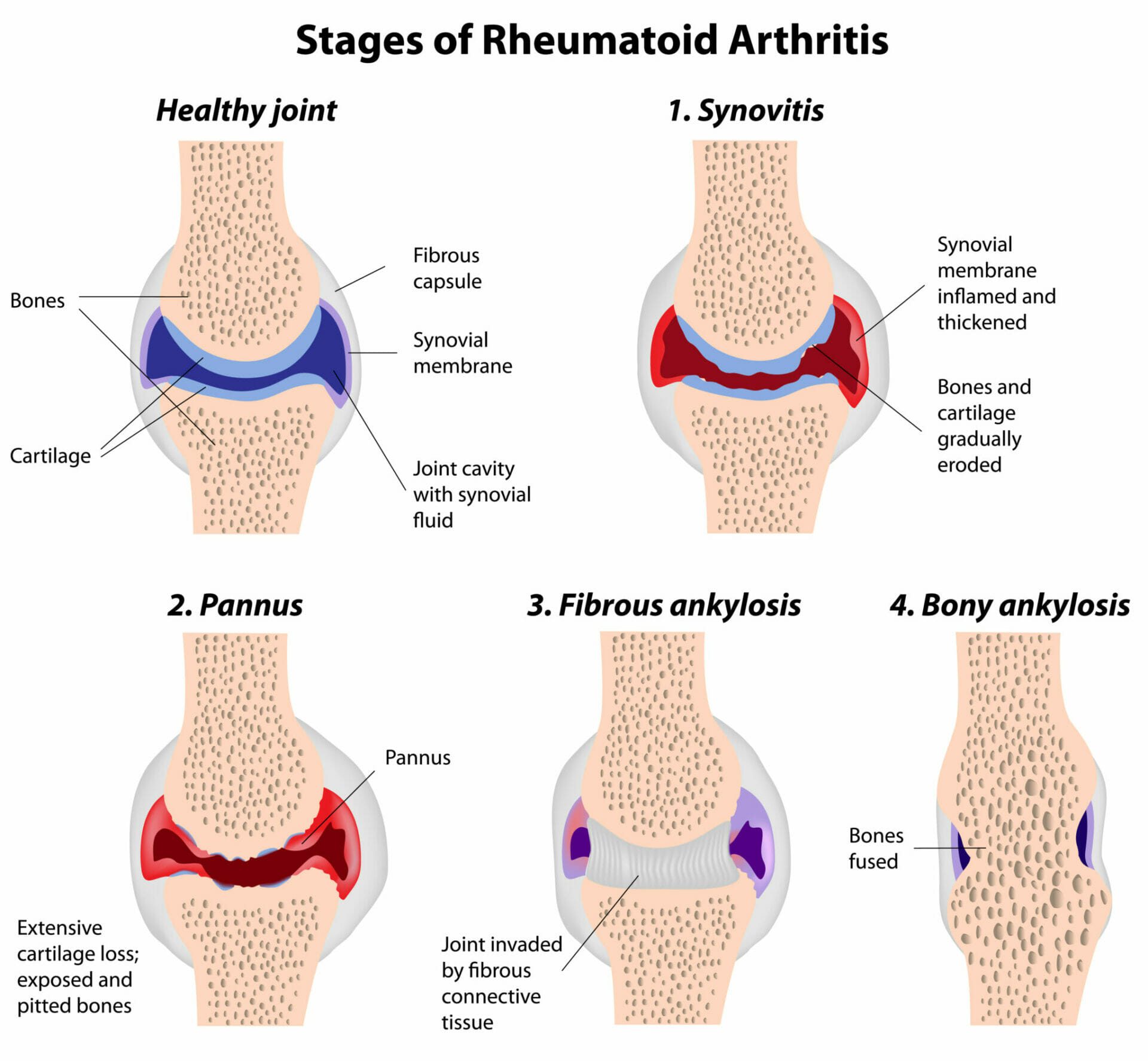 They can be used as an alternative to pharmaceuticals that perform the same tasks.
They can be used as an alternative to pharmaceuticals that perform the same tasks.
The advantage of this approach is the absence of side effects. The disadvantage is that the effect is only on the symptoms, and not on the cause of the inflammatory process. Therefore, home self-treatment cannot replace the complex therapy of oriental medicine.
Decoctions, teas
- With inflammation of the joints, oriental medicine recommends such a simple remedy as a decoction of oats. It gives a good preventive effect in atherosclerosis, but also helps with arthritis. For brewing, you need to take unpeeled, whole grain oats. Pour boiling water at the rate of a liter of water per 200 g of oats. Simmer over low heat for half an hour. Cool, filter. Drink half an hour before meals twice a day, morning and evening.
- You can make a decoction of the roots of the cinquefoil. This plant is used in Tibetan medicine for inflammatory diseases of the joints. Take three tablespoons of dried cinquefoil roots.
 Pour into a thermos, pour three glasses of boiling water and brew for half an hour. Take 1/3 cup three times a day before meals.
Pour into a thermos, pour three glasses of boiling water and brew for half an hour. Take 1/3 cup three times a day before meals. - Elder flowers are also used in Tibetan medicine as a remedy for inflammation. Brew three teaspoons of dried flowers with 250 ml of boiling water. Drink one to three glasses a day.
- Baikal skullcap became widely used when Tibetan medicine came to Transbaikalia. Local herbalists have managed to replace Tibetan ingredients with local medicinal plants. One of the first places went to the skullcap.
With arthritis, such a decoction is used. You need to put two teaspoons of dried flowers and skullcap leaves in a thermos. Pour 400 ml of boiling water and brew for two hours. Strain. Drink one tablespoon before meals 3-5 times a day.
CONTENT:
- Tinctures
- Rubbing, ointments
- Compresses
- Baths
- Our doctors
- Prices
- Reviews
- Get a bonus on treatment
Tinctures
1. Take 50 g of dry cinquefoil roots and 25 g of galangal. Pour 0.7 liters of vodka. Insist 3 weeks. Drink one tablespoon 30 minutes before meals three times a day.
Take 50 g of dry cinquefoil roots and 25 g of galangal. Pour 0.7 liters of vodka. Insist 3 weeks. Drink one tablespoon 30 minutes before meals three times a day.
In addition to cinquefoil and galangal, in Tibetan medicine, skullcap Baikal, calamus roots, and elecampane roots are used for alcohol or vodka tinctures. Usually alcohol tincture is diluted to a strength of 20 degrees and applied one tablespoon three times a day.
Rubbing, ointments
- Rub vodka tincture of cinquefoil and galangal into the joint area overnight (see above for the recipe).
- Prepare an alcohol tincture from cinquefoil (50 g of crushed roots per 0.5 l of alcohol). Add hot red pepper to it (one pod per 200 ml of alcohol) and honey at the rate of one teaspoon of tincture of cinquefoil and red pepper per one tablespoon of honey. Use as an ointment, rubbing into the joint area to relieve inflammation and pain.
Compresses
- Mix one part crushed aloe and two parts honey.
 Lubricate the joint, hold for 40 minutes, then rinse.
Lubricate the joint, hold for 40 minutes, then rinse. - Grate the radish. Use as a compress on the joint for 20 minutes.
- Mix one part turpentine, one part alcohol and one part olive oil. Mix, apply to the joint, tie with a cloth (preferably woolen). Keep until the pain decreases, but no more than a few hours.
- Peel and grate potatoes. Warm in a water bath to 37 degrees. Put in a cloth bag, put on the joint. Top with fabric.
Baths
For arthritis, hot baths are contraindicated, but warm baths (37 degrees) can be used.
- The simplest bath is with sea salt. Decoctions of medicinal plants are added to the water, for example, pharmacy chamomile, sage.
Take one tablespoon each of dry sage and chamomile. Pour one liter of boiling water and boil for three minutes. Filter and add the decoction to the bath.
- In arthritis, not only oats decoction is useful, but also baths with straw decoction.
 For a decoction, you need 500 g of oat straw. Pour two liters of water, boil for half an hour, add to the bath.
For a decoction, you need 500 g of oat straw. Pour two liters of water, boil for half an hour, add to the bath.Along with phytotherapy in the home treatment of arthritis, exercise therapy and diet are used. Exercise and nutrition for arthritis can only be prescribed by a doctor, depending on the nature and cause of the inflammation.
Initial consultation – free of charge!
“Tibet” – Oriental medicine clinic in Moscow. We have been working since 2007.
Extensive diagnostic and treatment options for more than 250 diseases.
+7 (495) 781-57-57
Who treats
this disease
Treatment of arthritis – drugs, folk remedies, physiotherapy
Treatment programDoctorsPricesReviews
Contents
- Medical therapy
- Diet therapy
- Folk methods
- Physiotherapy
- Therapeutic gymnastics
- Acute purulent arthritis
- Traumatic arthritis
- Rheumatoid arthritis
- Reactive arthritis
- Juvenile idiopathic arthritis
- Infectious arthritis
- Psoriatic arthritis
- Gouty arthritis
- Chronic arthritis
- Arthritis deformans
Inflammation of the joints (arthritis) is one of the most common diseases. Its peculiarity is the presence of numerous clinical forms that require a special approach to treatment and the participation of different specialists in it. This article draws attention to the fact that it is very important to start treating arthritis as early as possible and not on your own (this can only aggravate the situation), but by seeking help from specialists.
Its peculiarity is the presence of numerous clinical forms that require a special approach to treatment and the participation of different specialists in it. This article draws attention to the fact that it is very important to start treating arthritis as early as possible and not on your own (this can only aggravate the situation), but by seeking help from specialists.
Paramita Clinic (Moscow) will provide you with all the necessary assistance, and you will forget about joint pain.
Modern approaches to the treatment of arthritis
Different clinical forms of joint inflammatory processes require different approaches to their therapy. Treatment aimed at eliminating the cause of the disease (etiotropic) is possible only in the treatment of arthritis caused by a specific infection – tuberculosis, brucellosis, gonorrhea, etc.
All other types of inflammatory processes require an individual approach and complex therapy aimed at:
- elimination of inflammation and pain syndrome;
- suppression of chronic foci of infection that support the inflammatory process in the joints;
- suppression of an increased reaction from the immune system;
- restoration of cartilage and altered joint function;
- for secondary arthritis – therapy of the underlying disease that caused damage to the joints (gout, diseases of the gastrointestinal tract).

How and with what to treat arthritis of various joints, the attending physician decides on the basis of the examination. Modern medicine has effective medicines, the latest techniques developed in advanced clinics and research institutes. As part of the complex treatment of arthritis, many clinics include oriental techniques.
Drug therapy
Drugs for the treatment of arthritis
Each clinical form of the disease has its own treatment regimens. But there are drugs that are prescribed for any form:
- Non-steroidal anti-inflammatory drugs (NSAIDs – Ketorol, Diclofenac, Nise) – relieve inflammation, tissue swelling, pain. Drugs in this group may have more pronounced anti-inflammatory or analgesic properties, so the doctor chooses the most appropriate remedy in accordance with the existing symptoms. Depending on the intensity of the symptoms at the initial stage, the medicine is prescribed in the form of injections (intramuscular injections), oral tablets or external agents (ointments, gels, creams).

- Desensitizers – allow you to suppress the hypersensitivity of the body to a substance. This is a group of antihistamines (Suprastin, Claritin, Erius, etc.), glucocorticoid hormones (Prednisolone, Dexamethasone). In some cases, immunosuppressive agents and cytostatics that suppress the immune system are also prescribed.
- Chondroprotectors – drugs that restore metabolic processes in the cartilage covering the surface of the joint – Dona, Structum, Chondroxide.
- Vitamins, minerals, amino acids, biostimulants that help restore metabolism in joint tissues.
How to cure arthritis and can it be done? Acute inflammatory diseases respond well to treatment, with the appointment of adequate therapy, a complete recovery is possible. In chronic processes, the doctor’s task is a long-term (sometimes lifelong) remission. It is also quite possible to achieve this. But when exposed to provoking factors, an exacerbation can occur, so doctors recommend that maintenance treatment be carried out during remission.
Diet therapy
There is no special diet for arthritis, except for gouty arthritis, in which diet is the main form of therapy.
But very often inflammatory processes are combined with allergic ones, so a hypoallergenic diet is prescribed. With this diet, substances that can cause and maintain allergic reactions are excluded from the diet. These are milk, eggs, fish, caviar, citrus fruits, pomegranates, melons, black currants, strawberries, raspberries, honey, nuts, mushrooms, orange-red vegetables and fruits, chocolate, cocoa.
Spicy seasonings, salted, canned and smoked foods, mustard, horseradish are also excluded. It is recommended to limit sweets, muffins, sweet carbonated drinks, alcohol.
Traditional methods
Some forms of inflammation are long-term, with frequent exacerbations and are accompanied by severe pain. This requires long courses of drugs that have enough side effects. To reduce the drug load on the patient’s body, the doctor includes folk remedies in the complex therapy. Most often, these are herbal infusions, decoctions, rubbing, compresses. For example:
Most often, these are herbal infusions, decoctions, rubbing, compresses. For example:
- infusion of elm bark for oral administration : remove the top layer from young elm shoots, scrape off the green layer, dry, grind and drink for two weeks 2 times a day as tea, brewing half a teaspoon of powder to a glass of boiling water; relieves swelling and joint pain;
- poplar bud ointment : grind dried poplar buds, grind into powder, mix with an equal volume of butter and use as a rub; anesthetic.
Physiotherapy
Physiotherapy treatments are excellent in combination with and complementary medical treatment of arthritis. The choice of procedures depends on the stage of the inflammatory process, the presence of pain and deformity of the joints. In the acute stage of inflammation, electrophoresis with anti-inflammatory and analgesic drugs (Hydrocortisone, Lidocaine, etc.) is prescribed. They also prescribe courses of magneto-, laser-, ultrasound therapy.
Therapeutic exercises
Therapeutic exercises for arthritis (exercise therapy)
Therapeutic exercise complexes (exercise therapy) are prescribed by a doctor. They “join” the treatment regimen after the elimination of the acute inflammatory process and for the first time they are performed under the supervision of an instructor. The main principles of exercise therapy are:
- systematic;
- slow gradual increase in physical activity;
- stop exercising when pain occurs.
Exercise therapy complexes are prescribed depending on the age, physical form and activity of the patient. They improve blood circulation and metabolism in the joint, contribute to its recovery, prevent the development of muscle atrophy and disorders of joint functions.
Features of the treatment of certain forms of arthritis
Different causes and mechanisms of development of certain forms of the disease require a different approach to treatment and the participation of different specialists in it.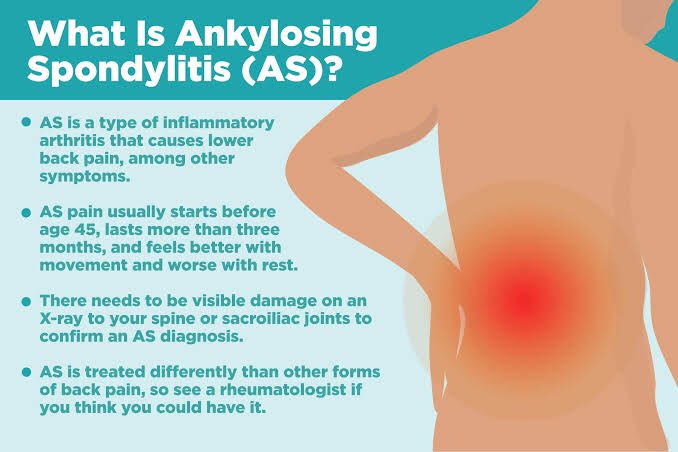
If you have symptoms of arthritis and don’t know who to contact, start with a therapist. He will prescribe a preliminary examination, and then refer you to the right specialist.
Acute purulent arthritis
The cause of the disease is a non-specific (opportunistic, living on the surface of the body or in chronic foci of inflammation) microflora – staphylococci, streptococci, Escherichia coli, Proteus, etc. Infection can enter the joint cavity with an open wound , as well as with the flow of blood or lymph from other foci of inflammation.
An acute inflammatory process develops in the area of the affected joint with a high temperature and a severe general condition. This pathology is treated by surgeons or orthopedic traumatologists. In addition to the above general treatments, purulent arthritis is treated with joint immobilization (rest) and antibiotic therapy. During therapeutic arthroscopy (examination of the joint cavity using optical equipment), pus is removed from the cavity, then it is washed with an antiseptic, and the contents (exudate) are sent to the laboratory to identify the infection and determine its sensitivity to antibiotics. After receiving the analysis, antibiotics are prescribed, the sensitivity to which the infection shows.
After receiving the analysis, antibiotics are prescribed, the sensitivity to which the infection shows.
If there is no effect, purulent inflammation is treated by long-term flow drainage (excretion of pus with washing the joint with antiseptics) or by performing a surgical operation. An acute articular inflammatory process is curable if there are no severe complications and the transition of an acute course into a chronic one.
Traumatic arthritis
After a joint injury (most often knees are affected), an aseptic (without infection) inflammatory process can develop in it. It goes by fast enough. The treatment is carried out by an orthopedist-traumatologist: he ensures the immobility of the joint, prescribes drugs from the NSAID group and electrophoresis with Hydrocortisone.
But sometimes a nonspecific infection joins the aseptic inflammation. Inflammation can be purulent or non-purulent (serous). In this case, antibiotics are added to the treatment. With proper treatment, if the structure of the joint was not disturbed during the injury, the disease ends in recovery.
Rheumatoid arthritis (RA)
Rheumatoid arthritis most often affects the joints of the hands and feet
RA is an autoimmune process, which is based on an allergy to one’s own tissues. This pathology is characterized by a symmetrical lesion of a large number of small joints of the hand and foot, but sometimes large joints are also affected. Accompanied by severe pain, inflammation, swelling and deformity of the joints, stiffness of movements in the morning.
Arthritis is treated by a rheumatologist: NSAIDs, glucocorticoid hormones in short courses, antihistamines are prescribed. The main treatment is basic therapy, which includes drugs that suppress autoimmune processes. The basic drugs include: Sulfasalazine, Methotrexate, Leflunomide. In case of intolerance to these drugs, gold preparations are prescribed (sodium aurothiomalate, etc.). Recently, another group of drugs has appeared – biological agents (MabThera, Redditux), which also suppress autoimmune processes.
For the treatment of arthritis of the joints of the hands and feet (and, if necessary, of large joints), physiotherapy, courses of acupuncture, pharmacopuncture and other oriental methods of treatment are widely used. In a state of remission, spa treatment is recommended. Extensive experience in the treatment of RA in the sanatoriums of the Caucasian Mineralnye Vody, after which most patients feel much better.
Reactive arthritis
This form of the disease develops 2-3 weeks after infection with a genitourinary or intestinal infection (most often chlamydial). The mechanism of the development of the disease has not been precisely established, but it is believed that it is of an infectious-allergic nature. Inflammation develops mainly in the joints of the lower extremities, lasts several months, sometimes becomes chronic.
How to cure reactive arthritis, only a doctor can tell after a preliminary examination. Often two specialists are involved in the treatment: a urologist (gynecologist, infectious disease specialist) and a rheumatologist. The infection is treated with antibiotics to which it is sensitive. Medications from the NSAID group are also prescribed, with severe edema – glucocorticoid hormones. In the case of a chronic process, the composition of the complex treatment of arthritis includes basic drugs for the treatment of rheumatoid arthritis – Methotrexate, Sulfasalazine, Leflunomide.
The infection is treated with antibiotics to which it is sensitive. Medications from the NSAID group are also prescribed, with severe edema – glucocorticoid hormones. In the case of a chronic process, the composition of the complex treatment of arthritis includes basic drugs for the treatment of rheumatoid arthritis – Methotrexate, Sulfasalazine, Leflunomide.
Juvenile idiopathic arthritis (JIA)
This disease develops in children under 16 years of age. Idiopathic means of undetermined nature. It is believed that there may be several causes of the disease; in adolescents, they are sometimes associated with hormonal disorders. The disease often affects girls, is chronic, has several forms and is often the cause of disability. Its manifestations are similar to those of rheumatoid arthritis.
Juvenile arthritis is treated by a rheumatologist and is almost identical to RA. Inflammation and pain in the joints are relieved by drugs from the NSAID groups, glucocorticoid hormones, antihistamines. Suppression of the inflammatory process occurs when basic preparations and biological agents are prescribed. Physiotherapy, reflexology, physiotherapy exercises, spa treatment are also used.
Suppression of the inflammatory process occurs when basic preparations and biological agents are prescribed. Physiotherapy, reflexology, physiotherapy exercises, spa treatment are also used.
Chondroprotectors what it is how to choose how effective they are
Joint pain at rest
Infectious arthritis
Specific infectious arthritis develops against the background of bacterial, viral, fungal and parasitic infections. A feature of these diseases is the continuation of the pathological process in the joints after recovery from the infection that caused it. Infectious processes include tuberculosis, gonorrhea, brucellosis, viral, fungal, echinococcal.
Treatment depends on the infection identified and the stage of inflammation. It is carried out by infectious disease specialists, phthisiatricians. With a long course of infectious arthritis, rheumatologists join them. In acute course, antibacterial (antifungal, antiparasitic) therapy is prescribed. To eliminate inflammation, swelling and pain, drugs from the NSAID group are prescribed, if there is no improvement, glucocorticoid hormones are prescribed in short courses, including their administration by electrophoresis. After reducing inflammation, physiotherapy exercises, massage, reflexology courses are added.
After reducing inflammation, physiotherapy exercises, massage, reflexology courses are added.
Psoriatic arthritis
This form of the disease develops with existing skin rashes. The symptoms of the disease are similar to those of RA. The terminal interphalangeal joints of the fingers and nails are affected.
Arthritis is treated by a dermatovenereologist together with a rheumatologist. The underlying disease (psoriasis) is treated, and complex treatment is prescribed, as in RA: NSAIDs, glucocorticoid hormones, basic drugs, biological agents are prescribed.
The main difference between the treatment of psoriatic arthritis and RA is that gold preparations are not prescribed – they can provoke the development of exacerbations.
The use of reflexology and PRP therapy gives a good effect.
Reflexology and PRP therapy help to cure psoriatic arthritis
Gouty arthritis
Inflammation of the joints is the main symptom of gout. The disease is associated with an increase in the content of uric acid in the blood and the deposition of its salts in the periarticular tissues. The first attacks of gout go away without any consequences, but with a long course of the disease, a violation of the function of the joint is possible.
The first attacks of gout go away without any consequences, but with a long course of the disease, a violation of the function of the joint is possible.
Arthritis is treated by an internist or rheumatologist. In acute inflammation, they try to minimize swelling and pain as much as possible. In addition to the usual anti-inflammatory drugs, Colchicine is prescribed – a drug that affects the metabolism of uric acid, which has an anti-inflammatory and analgesic effect. If necessary, prescribe glucocorticoid hormones (electrophoresis with hydrocortisone).
Treatment in remission aims to restore uric acid metabolism and prevent acute attacks of gout. Assign Colchicyl, Allopurinol (suppresses the synthesis of uric acid), Febuxostat (lowers the concentration of uric acid in the blood serum).
A diet with maximum restriction of foods rich in purine bases is of great importance. These are offal (liver, kidneys, brains), red meat (especially the meat of young animals), meat broths, canned fish in oil (sardines, sprats), concentrated meat broths, nuts, legumes, cocoa, coffee, chocolate, spirits. Meat and fish are recommended to be consumed every other day and less often only in boiled form.
Meat and fish are recommended to be consumed every other day and less often only in boiled form.
Dairy products, eggs, cereals, potatoes, fruits should be included in the diet. A dairy-vegetarian diet has a beneficial effect on such patients.
Chronic arthritis
Any clinical form of arthritis may be acute or chronic. Only the attending physician can tell how chronic arthritis is treated, since each patient has his own individual characteristics that affect the course of the disease.
Long-term treatment consisting of suppression of the inflammatory process and restorative therapy during remission. The patient is advised to lead a healthy lifestyle, give up bad habits, adjust the mode of wakefulness and sleep, monitor their weight, treat all concomitant diseases in a timely manner and conduct courses of anti-relapse treatment prescribed by the doctor.
Arthritis deformans
Arthritis deformans can develop with a long course of any clinical form of the disease. At the same time, muscle weakness and ankylosis develop – immobility of the joint, its function is disturbed.
At the same time, muscle weakness and ankylosis develop – immobility of the joint, its function is disturbed.
Treatment of arthrosis-arthritis is carried out by an orthopedist-traumatologist, but in case of exacerbations of the inflammatory process, a rheumatologist is involved in the treatment. During an exacerbation of the disease, treatment is prescribed that corresponds to this form of the disease. During the period of remission, they try to stop the progression of the pathological process and restore the function of the joint. For this, chondroprotectors, courses of physiotherapeutic procedures, reflexology, PRP therapy (modern methods that stimulate tissue repair) are prescribed. A good result is given by spa treatment with a course of mud applications and therapeutic baths.
In deforming arthritis, it is important to try to restore the function of the joint
Oriental methods of treatment
In China and Tibet, arthritis has been treated for many centuries using oriental methods. They are based on the idea of a system of meridians along which the QI energy moves. In case of illness, there will be an excess of energy in one organ, and a deficiency in the other.
They are based on the idea of a system of meridians along which the QI energy moves. In case of illness, there will be an excess of energy in one organ, and a deficiency in the other.
To restore the balance, you need to know the basic philosophical laws, always imagine the human body as a single system and be able to direct the movement of QI in the right direction. This is achieved by influencing special points (acupuncture – AT) on the human body, reflexively associated with various organs and tissues. Restoration of energy balance leads to an improvement in the health of the whole organism, including the restoration of the work of the affected organ.
Acupuncture in our clinic
Currently, reflexology (RT) has become part of the official medicine and is used along with classical methods of treatment. The impact on AT can be carried out in various ways.
Distinguish:
- acupuncture (IRT, acupuncture, zhen therapy) – introduction of thin needles into the AT;
- cauterization (jiu-therapy, moxibustion) – warming up AT with the help of wormwood cigarettes;
- acupressure – impact on AT with massage movements.

The traditional methods of RT have now been joined by pharmacopuncture – the introduction of modern highly effective drugs into the AT.
Oriental methods of treating arthritis also include phytotherapy – treatment with herbs and other herbal remedies. This technique has also been adopted by modern medicine.
The most effective oriental methods of treating arthritis: acupuncture, acupressure, cauterization
Features of the approach to the treatment of arthritis in the clinic “Paramita”
Our clinic specialists know exactly how to treat arthritis. Before treatment, a comprehensive examination of the patient is mandatory, including magnetic resonance imaging (MRI) of the affected joints. Treatment is prescribed after the diagnosis is established strictly individually using modern European methods and medicines, as well as oriental methods of treatment, leading to the improvement of the body as a whole.
Already after the first sessions of individually selected therapy, the pain disappears, and then the function of the joints is gradually restored. The specialists of our clinic do not guarantee instant relief from chronic arthritis, but if the patient follows all the doctor’s recommendations and takes preventive courses of treatment, then he forgets about pain and inflammation, and leads a normal life. All the details about the treatment of arthritis in the Paramita clinic can be found on our website.
The specialists of our clinic do not guarantee instant relief from chronic arthritis, but if the patient follows all the doctor’s recommendations and takes preventive courses of treatment, then he forgets about pain and inflammation, and leads a normal life. All the details about the treatment of arthritis in the Paramita clinic can be found on our website.
Frequently asked questions about the disease
Which doctor treats arthritis?
Can arthritis be 100% cured?
Are there any new generation drugs for arthritis?
Different forms of arthritis require the use of different drugs. For purulent arthritis – these are new generations of antibiotics, for rheumatoid arthritis – new generations of basic drugs, biological agents, etc.
Arthritis treatment is not an easy task and should be left to the experts. With proper treatment, acute arthritis can be eliminated forever, the main thing is to prevent the transition of an acute course into a chronic one.


 In severe cases, several vertebrae may fuse together and cause a hunch in the back.
In severe cases, several vertebrae may fuse together and cause a hunch in the back.
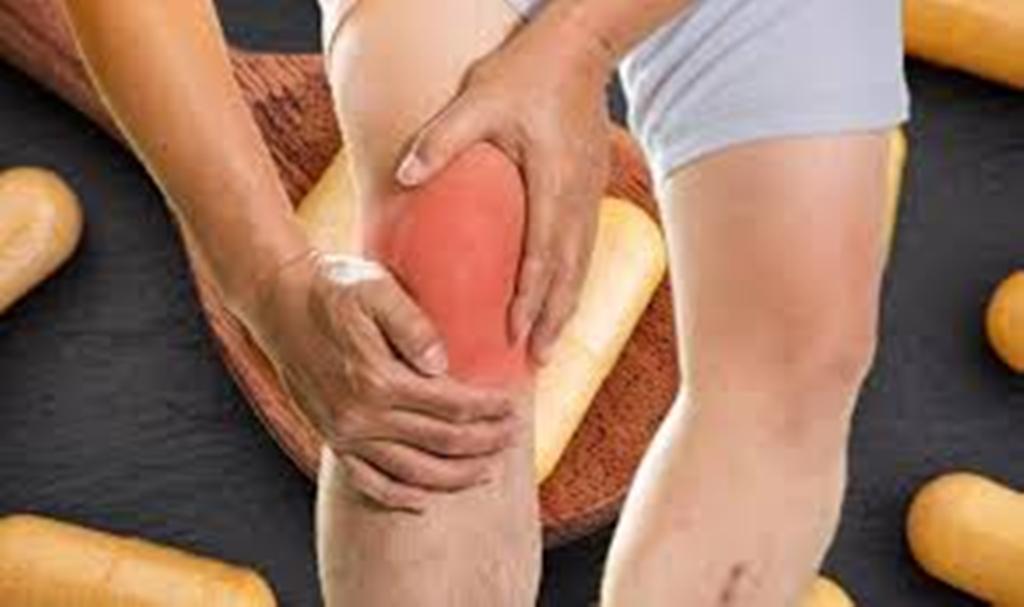


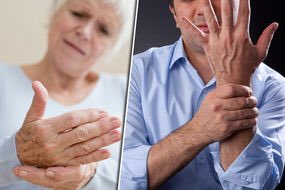 Learn how to perform a range of exercises and stretches for the…
Learn how to perform a range of exercises and stretches for the…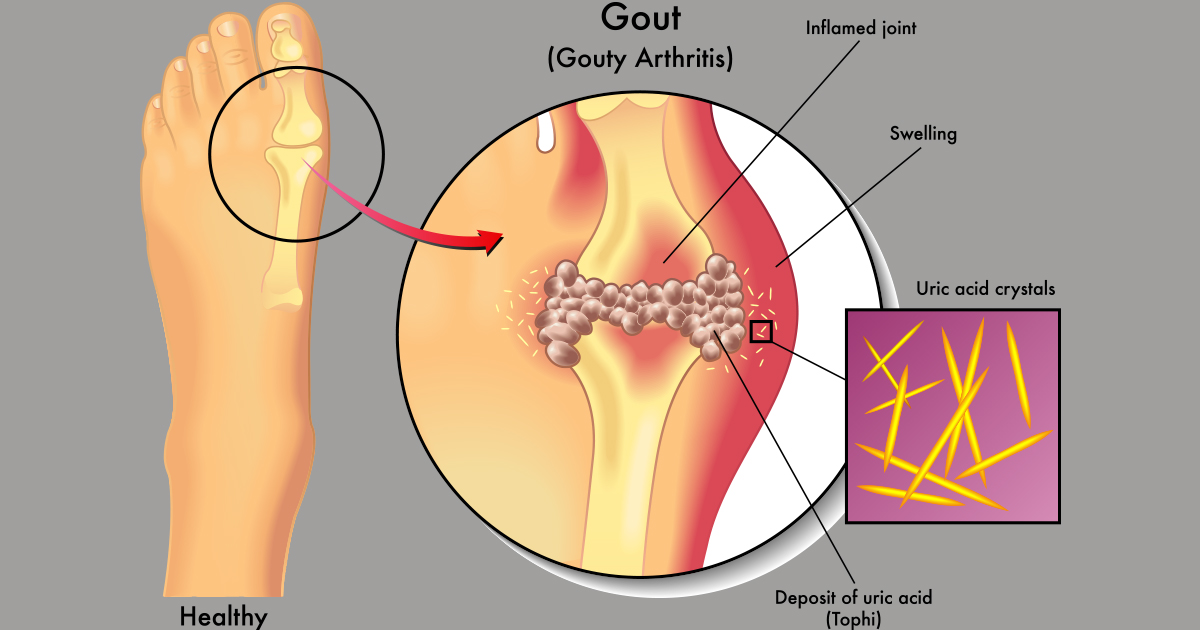 Pour into a thermos, pour three glasses of boiling water and brew for half an hour. Take 1/3 cup three times a day before meals.
Pour into a thermos, pour three glasses of boiling water and brew for half an hour. Take 1/3 cup three times a day before meals. Lubricate the joint, hold for 40 minutes, then rinse.
Lubricate the joint, hold for 40 minutes, then rinse. For a decoction, you need 500 g of oat straw. Pour two liters of water, boil for half an hour, add to the bath.
For a decoction, you need 500 g of oat straw. Pour two liters of water, boil for half an hour, add to the bath.
